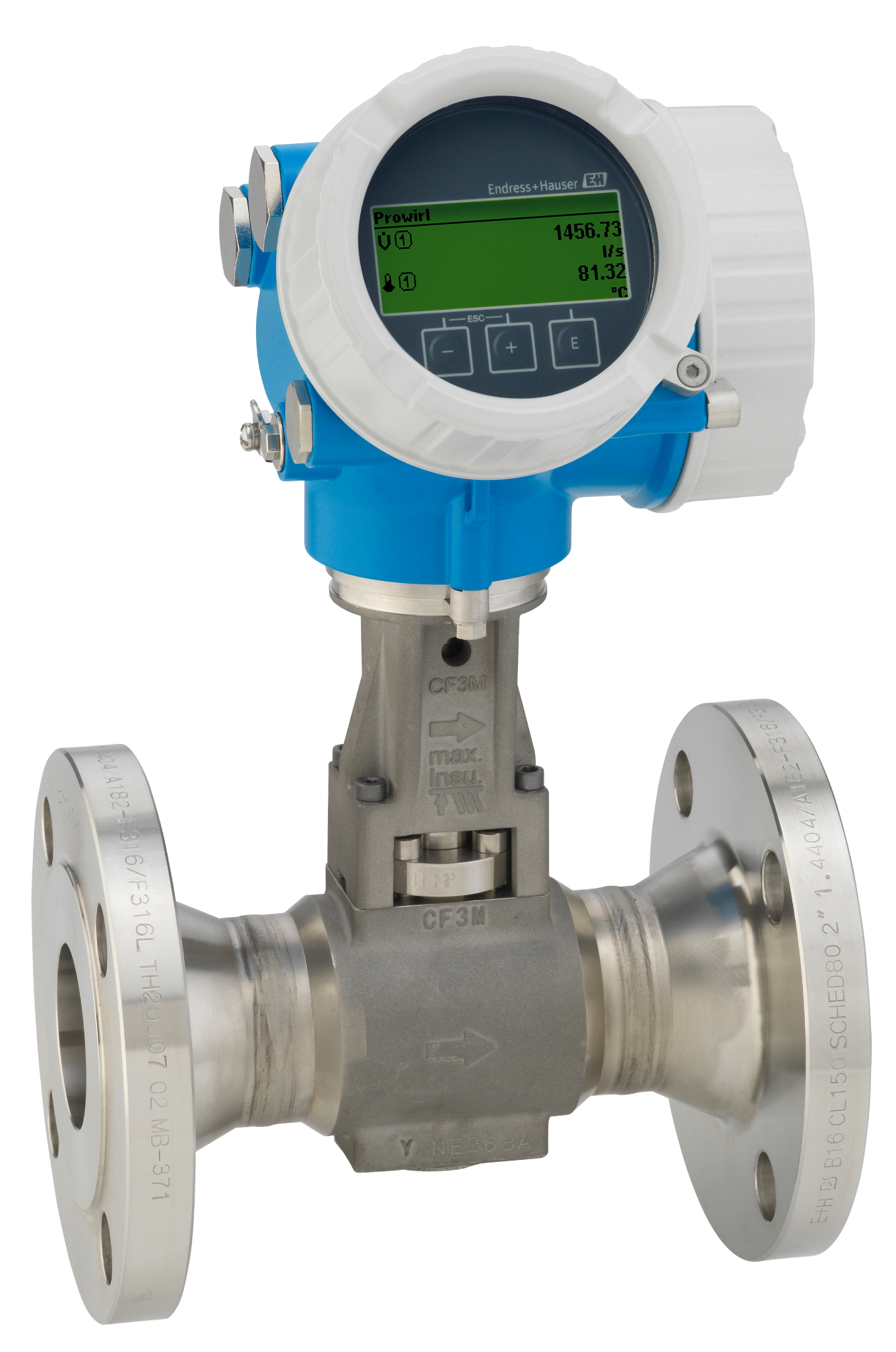Vortex flowmeters are used in numerous branches of industry to measure the volume flow of liquids, gases and steam. Applications in the chemicals and petrochemicals industries, for example, in power generation and heat-supply systems involve widely differing fluids: saturated steam, superheated steam, compressed air, nitrogen, liquefied gases, flue gases, carbon dioxide, fully demineralized water, solvents, heat-transfer oils, boiler feedwater, condensate, etc.

This unique flowmeter provides extreme accuracy and can detect wet steam conditions.
Predecessor model: Proline Prowirl F 200 / 7F2B
This measuring principle is based on the fact that turbulence forms downstream of obstacles in the flow, such as a bridge pier.
Inside each vortex flowmeter, a bluff body is therefore located in the middle of the pipe. As soon as the flow velocity reaches a certain value, vortices form behind this bluff body, are detached from the flow and transported downstream. The frequency of vortex shedding is directly proportional to mean flow velocity and thus to volume flow.
The detached vortices on both sides of the bluff body generate alternately a local positive or negative pressure that is detected by the capacitive sensor and fed to the electronics as a primary digital, linear signal.